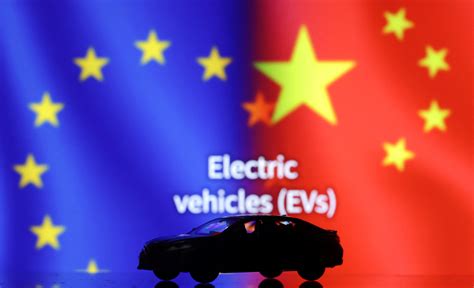
Brazil is grappling with growing trade tensions as a surge of affordable electric vehicles (EVs) from China floods its market, raising concerns among local manufacturers and policymakers about potential damage to the domestic auto industry.
Brazilian automakers and government officials are expressing increasing alarm over the influx of cheaper Chinese EVs, fearing it could undermine their competitiveness and lead to job losses. The rapid expansion of Chinese EV manufacturers into the Brazilian market is forcing a reassessment of industrial strategies and trade policies. The Brazilian government is now contemplating measures to protect its domestic industry, mirroring similar concerns in other global markets like the United States and Europe.
The influx of Chinese EVs into Brazil represents a significant shift in the country’s automotive landscape. Previously dominated by internal combustion engine (ICE) vehicles, the Brazilian market is now witnessing a rapid transition towards electrification, largely driven by the affordability and availability of Chinese EVs. “These vehicles are not just cheaper; they are also technologically advanced,” stated a recent report from the Brazilian Automotive Manufacturers Association (ANFAVEA).
The primary concern for Brazilian manufacturers is the price disparity between domestically produced vehicles and their Chinese counterparts. Chinese EV manufacturers benefit from economies of scale, government subsidies, and lower labor costs, enabling them to offer EVs at significantly lower prices. This price advantage makes it difficult for Brazilian automakers to compete, potentially leading to a decline in domestic production and increased reliance on imports.
Furthermore, the entry of Chinese EVs could disrupt the established automotive supply chain in Brazil. Local suppliers, who primarily cater to the ICE vehicle market, may struggle to adapt to the demands of EV production, potentially leading to further economic challenges.
The Brazilian government is now under pressure to take action to protect its domestic auto industry. Options under consideration include tariffs on imported EVs, subsidies for local EV manufacturers, and stricter regulations on imported vehicles. However, any measures taken must also consider Brazil’s trade agreements and its commitment to promoting sustainable transportation.
The situation in Brazil mirrors similar concerns in other parts of the world. The United States and the European Union have also expressed concerns about the impact of Chinese EVs on their domestic industries. Both regions are considering or have already implemented measures to protect their markets, including tariffs and stricter regulations. The global surge in Chinese EV exports is prompting a broader debate about fair trade practices, industrial policy, and the future of the automotive industry.
The rise of Chinese EVs in Brazil is not without its benefits. The increased availability of affordable EVs could accelerate the adoption of electric vehicles, contributing to reduced emissions and improved air quality. However, the challenge lies in balancing the environmental benefits with the need to protect domestic industries and jobs.
The Brazilian government faces a complex task in navigating this situation. It must find a way to promote sustainable transportation while also ensuring the long-term viability of its domestic auto industry. The decisions made in the coming months will have a significant impact on the future of the Brazilian automotive market and the country’s broader economic landscape.
Background:
Brazil’s automotive industry has historically been a significant contributor to the country’s economy, employing a substantial workforce and generating significant revenue. The industry has traditionally focused on the production of ICE vehicles, catering to both domestic and export markets. However, the global shift towards electrification has presented both opportunities and challenges for the Brazilian auto industry.
The Brazilian government has been promoting the adoption of electric vehicles through various incentives, including tax breaks and subsidies. However, the pace of EV adoption has been relatively slow compared to other countries, partly due to the higher cost of EVs compared to ICE vehicles. The arrival of cheaper Chinese EVs has the potential to accelerate EV adoption but also poses a threat to the domestic industry.
China has emerged as a global leader in EV production, driven by significant government investment, technological advancements, and a large domestic market. Chinese EV manufacturers have rapidly expanded their production capacity and are now exporting EVs to markets around the world, including Brazil. The competitiveness of Chinese EVs is largely attributed to their lower prices, which are often significantly lower than those of comparable vehicles produced in other countries. This cost advantage has enabled Chinese EV manufacturers to gain a significant foothold in global markets.
Economic Impact:
The influx of Chinese EVs into Brazil could have significant economic consequences, both positive and negative. On the positive side, increased EV adoption could lead to reduced emissions, improved air quality, and lower fuel consumption, which could benefit the Brazilian economy and environment. The availability of cheaper EVs could also make electric vehicles more accessible to a wider range of consumers, potentially stimulating demand and accelerating the transition to electric mobility.
However, the negative economic consequences could be substantial. The decline in domestic auto production could lead to job losses in the automotive industry and related sectors. The disruption of the automotive supply chain could also have a ripple effect throughout the Brazilian economy, impacting suppliers and other businesses that rely on the auto industry. The increased reliance on imported EVs could also negatively impact Brazil’s trade balance.
The Brazilian government is carefully assessing the potential economic impacts of the influx of Chinese EVs and is considering measures to mitigate the negative consequences. These measures could include tariffs on imported EVs, subsidies for local EV manufacturers, and investments in research and development to promote the competitiveness of the domestic industry.
Political Considerations:
The issue of Chinese EVs in Brazil also has significant political implications. The Brazilian government is under pressure from various stakeholders, including automakers, labor unions, and environmental groups, to take action to address the challenges and opportunities presented by the influx of Chinese EVs. The government must balance the competing interests of these stakeholders while also considering Brazil’s international trade obligations and its commitment to promoting sustainable development.
The Brazilian government’s response to the influx of Chinese EVs could also have implications for its relationship with China, which is Brazil’s largest trading partner. Brazil and China have a strong economic relationship, and any measures taken by Brazil to restrict imports from China could potentially strain this relationship. The Brazilian government must carefully consider the potential diplomatic consequences of its actions.
Potential Solutions:
Several potential solutions could address the challenges and opportunities presented by the influx of Chinese EVs into Brazil. These include:
-
Tariffs on Imported EVs: Imposing tariffs on imported EVs could increase their prices and make them less competitive with domestically produced vehicles. However, tariffs could also raise prices for consumers and potentially violate Brazil’s trade agreements.
-
Subsidies for Local EV Manufacturers: Providing subsidies to local EV manufacturers could help them to compete with Chinese EVs by lowering their production costs. However, subsidies could be costly for the government and could potentially distort the market.
-
Stricter Regulations on Imported Vehicles: Implementing stricter regulations on imported vehicles, such as safety and emissions standards, could make it more difficult for Chinese EVs to enter the Brazilian market. However, regulations could also raise prices for consumers and potentially violate Brazil’s trade agreements.
-
Investments in Research and Development: Investing in research and development to promote the competitiveness of the domestic auto industry could help Brazilian automakers to develop and produce EVs that can compete with Chinese EVs. However, research and development can be costly and time-consuming.
-
Promoting Collaboration: Encouraging collaboration between Brazilian and Chinese automakers could facilitate the transfer of technology and expertise, helping Brazilian automakers to develop and produce competitive EVs. However, collaboration could also raise concerns about intellectual property protection.
Comparative Analysis with Other Markets:
The situation in Brazil is not unique. Other countries, including the United States and the European Union, are also grappling with the influx of Chinese EVs and are considering similar measures to protect their domestic industries.
In the United States, the Biden administration has implemented policies to support the domestic EV industry, including tax credits for EV purchases and investments in charging infrastructure. The US government has also expressed concerns about unfair trade practices by China and has taken steps to address these concerns.
In the European Union, the European Commission is investigating whether Chinese EV manufacturers are receiving unfair subsidies from the Chinese government. The EU is also considering measures to strengthen its trade defenses and protect its domestic auto industry.
The experiences of the United States and the European Union could provide valuable lessons for Brazil as it navigates the challenges and opportunities presented by the influx of Chinese EVs.
Impact on Consumers:
For Brazilian consumers, the influx of Chinese EVs presents both opportunities and challenges. On the one hand, the availability of cheaper EVs could make electric vehicles more accessible to a wider range of consumers, potentially accelerating the transition to electric mobility. On the other hand, the decline in domestic auto production could lead to job losses and potentially reduce the availability of certain types of vehicles.
Consumers will also need to consider the quality and reliability of Chinese EVs. While Chinese EVs have made significant advancements in recent years, some consumers may still be hesitant to purchase vehicles from relatively unknown brands.
The Brazilian government and automakers have a responsibility to educate consumers about the benefits and risks of purchasing Chinese EVs and to ensure that consumers have access to accurate and reliable information.
Long-Term Implications:
The long-term implications of the influx of Chinese EVs into Brazil are significant. If Brazil fails to protect its domestic auto industry, it could become increasingly reliant on imported vehicles, which could have negative consequences for its economy and its industrial base.
However, if Brazil can successfully navigate the challenges and opportunities presented by the influx of Chinese EVs, it could emerge as a leader in the global EV market. By investing in research and development, promoting collaboration, and implementing effective policies, Brazil could create a vibrant and competitive EV industry that benefits its economy, its environment, and its consumers.
The future of the Brazilian auto industry depends on the decisions made by the government, automakers, and other stakeholders in the coming years. The choices they make will determine whether Brazil becomes a leader or a follower in the global EV revolution.
Frequently Asked Questions (FAQ):
- Why are Chinese EVs so much cheaper than those produced in Brazil?
Chinese EV manufacturers benefit from several factors that contribute to their lower prices. These include economies of scale due to a massive domestic market, substantial government subsidies for EV production, lower labor costs compared to Brazil, and established supply chains dedicated to EV components. These advantages allow them to offer EVs at a significantly lower price point than Brazilian manufacturers, who are still scaling up their EV production capabilities.
- What is the Brazilian government doing to address the influx of Chinese EVs?
The Brazilian government is considering various measures to address the situation. These include imposing tariffs on imported EVs to increase their prices, providing subsidies to local EV manufacturers to help them compete, implementing stricter regulations on imported vehicles to ensure safety and quality standards, investing in research and development to promote innovation in the domestic industry, and encouraging collaboration between Brazilian and Chinese automakers for technology transfer. The government aims to strike a balance between promoting EV adoption and protecting the domestic auto industry.
- How will the influx of Chinese EVs affect Brazilian consumers?
Brazilian consumers could benefit from the availability of cheaper EVs, making electric mobility more accessible. However, they may also face concerns about the long-term reliability and maintenance of these vehicles, as well as the potential impact on the resale value of domestically produced cars if the market shifts significantly. It’s important for consumers to research and compare different EV models before making a purchase decision.
- What are the potential long-term consequences for Brazil’s economy if the domestic auto industry declines?
A decline in the domestic auto industry could have significant long-term consequences for Brazil’s economy, including job losses in manufacturing and related sectors, reduced tax revenue for the government, a negative impact on the country’s trade balance due to increased imports, and a weakening of Brazil’s industrial base. This could also hinder Brazil’s ability to develop its own advanced manufacturing capabilities in the EV sector.
- Are other countries facing similar challenges with Chinese EV imports?
Yes, the United States and the European Union are also grappling with the influx of Chinese EVs and are considering or have already implemented measures to protect their domestic industries. These measures include tariffs, investigations into unfair trade practices, and subsidies for local EV manufacturers. The global surge in Chinese EV exports is prompting a broader debate about fair trade practices, industrial policy, and the future of the automotive industry. The strategies employed by these regions could provide valuable insights for Brazil as it navigates this complex situation.
In-depth Analysis:
The Brazilian automotive market, historically dominated by combustion engine vehicles, is undergoing a significant transformation fueled by the global shift towards electrification. While this transition presents opportunities for reducing carbon emissions and modernizing the transportation sector, the influx of affordable electric vehicles (EVs) from China is creating considerable trade tensions and challenges for the domestic automotive industry.
The affordability of Chinese EVs stems from a confluence of factors, including substantial government subsidies, mature supply chains dedicated to EV components, and lower labor costs, granting Chinese manufacturers a competitive edge in pricing. This cost advantage poses a direct threat to Brazilian automakers, who struggle to compete with the lower prices, potentially leading to decreased domestic production, job losses, and increased reliance on imports.
The situation necessitates a multifaceted response from the Brazilian government, balancing the promotion of electric vehicle adoption with the protection of domestic industries. Imposing tariffs on imported EVs could raise their prices, making them less competitive with locally produced vehicles. However, this approach could also raise prices for consumers and potentially violate existing trade agreements, triggering retaliatory measures from China.
Subsidies for local EV manufacturers could help offset the cost disadvantage faced by Brazilian automakers, enabling them to compete more effectively with Chinese EVs. However, subsidies require significant government investment and could potentially distort market dynamics.
Stricter regulations on imported vehicles, such as higher safety and emission standards, could also be implemented to raise the bar for Chinese EVs entering the Brazilian market. However, these regulations could also increase costs for consumers and potentially violate trade agreements if not implemented carefully.
Investing in research and development (R&D) is crucial for fostering innovation and developing a competitive domestic EV industry. Government support for R&D could help Brazilian automakers develop cutting-edge technologies and produce EVs that can compete with their Chinese counterparts in terms of performance, range, and features.
Promoting collaboration between Brazilian and Chinese automakers could facilitate technology transfer and knowledge sharing, enabling Brazilian manufacturers to gain access to the latest EV technologies and expertise. However, this collaboration requires careful consideration of intellectual property rights and the potential for unfair competition.
The long-term implications of the influx of Chinese EVs on Brazil’s automotive industry and economy are significant. A decline in the domestic auto industry could have far-reaching consequences, including job losses, reduced tax revenue, a widening trade deficit, and a weakening of Brazil’s industrial base. It could also hinder Brazil’s ability to develop its own advanced manufacturing capabilities in the EV sector.
However, if Brazil successfully navigates this transition, it could emerge as a leader in the global EV market. By implementing effective policies, fostering innovation, and promoting collaboration, Brazil could create a thriving EV industry that benefits its economy, its environment, and its consumers.
The challenges faced by Brazil mirror those of other countries, including the United States and the European Union, which are also grappling with the increasing presence of Chinese EVs in their markets. These regions are considering or have already implemented measures such as tariffs, investigations into unfair trade practices, and subsidies for local manufacturers.
The impact on Brazilian consumers is also a key consideration. While cheaper EVs could make electric mobility more accessible to a wider range of consumers, they may also have concerns about the long-term reliability, maintenance, and resale value of these vehicles. Ensuring consumer confidence and providing accurate information about EV options are essential for a successful transition to electric mobility.
The decisions made by the Brazilian government and industry stakeholders in the coming years will determine the future of the country’s automotive industry. By adopting a proactive and comprehensive approach, Brazil can navigate the challenges and capitalize on the opportunities presented by the global EV revolution, creating a more sustainable and prosperous future for its economy and its citizens. The success of Brazil’s EV strategy will depend on a delicate balance of protectionism, investment, and innovation. Failing to adapt risks relegating Brazil to a consumer of foreign technology rather than a producer and innovator in its own right.









